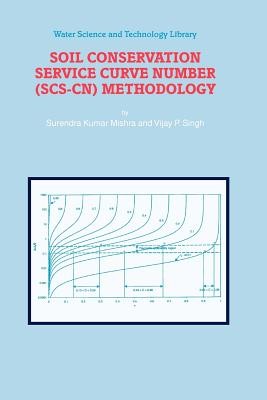
- We will send in 10–14 business days.
- Author: S K Mishra
- Publisher: Springer
- Year: 2010
- Pages: 516
- ISBN-10: 9048162254
- ISBN-13: 9789048162253
- Format: 15.6 x 23.4 x 2.8 cm, minkšti viršeliai
- Language: English
- SAVE -10% with code: EXTRA
Soil Conservation Service Curve Number (Scs-Cn) Methodology (e-book) (used book) | bookbook.eu
Reviews
Description
The Soil Conservation Service (SCS) curve number (CN) method is one of the most popular methods for computing the runoff volume from a rainstorm. It is popular because it is simple, easy to understand and apply, and stable, and accounts for most of the runoff producing watershed characteristics, such as soil type, land use, hydrologic condition, and antecedent moisture condition. The SCS-CN method was originally developed for its use on small agricultural watersheds and has since been extended and applied to rural, forest and urban watersheds. Since the inception of the method, it has been applied to a wide range of environments. In recent years, the method has received much attention in the hydrologic literature. The SCS-CN method was first published in 1956 in Section-4 of the National Engineering Handbook of Soil Conservation Service (now called the Natural Resources Conservation Service), U. S. Department of Agriculture. The publication has since been revised several times. However, the contents of the methodology have been nonetheless more or less the same. Being an agency methodology, the method has not passed through the process of a peer review and is, in general, accepted in the form it exists. Despite several limitations of the method and even questionable credibility at times, it has been in continuous use for the simple reason that it works fairly well at the field level.
EXTRA 10 % discount with code: EXTRA
The promotion ends in 23d.03:33:36
The discount code is valid when purchasing from 10 €. Discounts do not stack.
- Author: S K Mishra
- Publisher: Springer
- Year: 2010
- Pages: 516
- ISBN-10: 9048162254
- ISBN-13: 9789048162253
- Format: 15.6 x 23.4 x 2.8 cm, minkšti viršeliai
- Language: English English
The Soil Conservation Service (SCS) curve number (CN) method is one of the most popular methods for computing the runoff volume from a rainstorm. It is popular because it is simple, easy to understand and apply, and stable, and accounts for most of the runoff producing watershed characteristics, such as soil type, land use, hydrologic condition, and antecedent moisture condition. The SCS-CN method was originally developed for its use on small agricultural watersheds and has since been extended and applied to rural, forest and urban watersheds. Since the inception of the method, it has been applied to a wide range of environments. In recent years, the method has received much attention in the hydrologic literature. The SCS-CN method was first published in 1956 in Section-4 of the National Engineering Handbook of Soil Conservation Service (now called the Natural Resources Conservation Service), U. S. Department of Agriculture. The publication has since been revised several times. However, the contents of the methodology have been nonetheless more or less the same. Being an agency methodology, the method has not passed through the process of a peer review and is, in general, accepted in the form it exists. Despite several limitations of the method and even questionable credibility at times, it has been in continuous use for the simple reason that it works fairly well at the field level.


Reviews